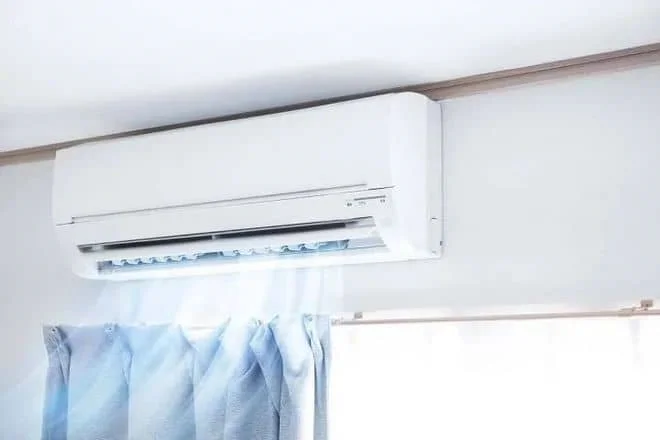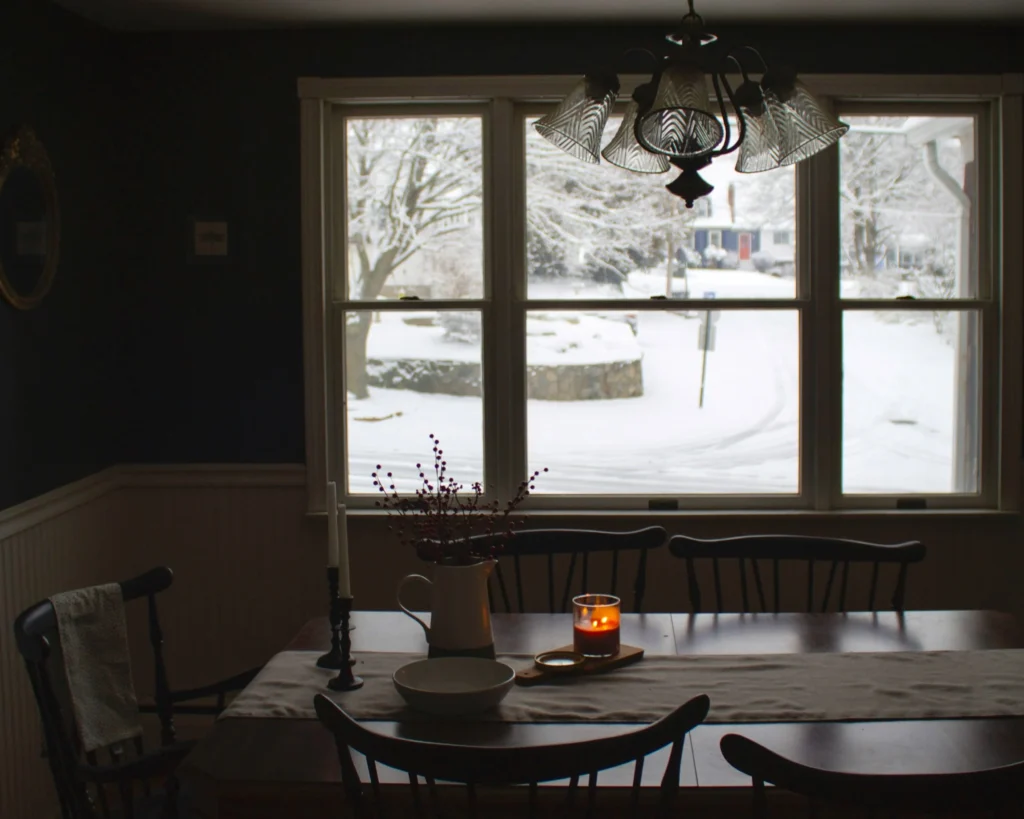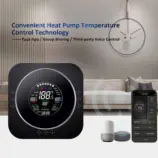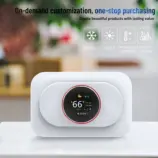As the mercury rises and falls with the changing seasons, many of us struggle to find the perfect temperature setting for our homes. Should we crank up the AC to beat the summer heat, or bundle up in sweaters to ward off the winter chill? The temperature displayed on our trusty thermostats plays a major role in our comfort, our bank accounts, and even our health.
In this detailed guide, we'll dive into the science behind optimal thermostat settings, providing clear recommendations for both summer and winter. After all, finding" just the right" temperature isn't just about personal preference - it has real implications that extend far beyond our own cozy bubbles.
Extreme heat or cold can put significant strain on the human body, leading to fatigue, discomfort, and even dangerous medical conditions. And let's not forget the impact on our wallets and the environment - energy-guzzling heating and cooling systems can quickly drive up utility bills and carbon footprints. By understanding the research-backed sweet spot for thermostat settings, you can create an indoor climate that keeps you comfortable while also being kind to your budget and the planet.
So, get ready to discover the Goldilocks zone of thermostat settings and learn how to achieve the perfect indoor climate year-round.
Keeping Your Cool: Optimal Thermostat Settings for Summer
As the temperatures outside soar, finding the right thermostat setting for summer can be a delicate balancing act. Set the temperature too low, and you'll be paying a hefty price for your energy bills. But if you keep it too high, you may find yourself and your family struggling to stay comfortable. So, what is the sweet spot?

According to the U.S. Department of Energy, the recommended thermostat setting for summer is between 78°F (25.5°C) and 82°F (27.8°C) when your home is occupied. This range strikes an ideal balance between energy efficiency and personal comfort. Anything lower than 78°F (25.5°C) can result in a dramatic increase in cooling costs, potentially hiking up your monthly utility bills by as much as 3-5% for every degree below this threshold.
Of course, this ideal temperature range isn't set in stone - there are several important factors that can influence the most suitable setting for your particular situation:
Outdoor Temperature and Humidity Levels
The hotter and more humid it is outside, the harder your air conditioning system has to work to maintain a comfortable indoor environment. In sweltering summer weather, you may need to keep your thermostat setting on the lower end of the recommended range to offset the intense heat and moisture.
Insulation and Ventilation
Well-insulated homes with adequate air circulation will generally require less intensive cooling to achieve the same level of comfort as poorly-insulated spaces. If your property has stellar insulation and efficient ventilation, you may be able to get away with a thermostat setting on the higher end of the range.
Occupancy and Activity Levels
The number of people in a given space and the intensity of their activities can also affect the ideal thermostat setting. Spaces with high occupancy and frequent movement, such as living rooms and home gyms, may need to be kept a degree or two cooler than more sparsely populated, sedentary areas like home offices or guest bedrooms.

Recommended Summer Thermostat Settings
| Scenario | Optimal Temperature Range |
| General Occupied Spaces | 78°F (25.5°C) to 82°F (27.8°C) |
| High Outdoor Temp/Humidity | 75°F (23.9°C) to 78°F (25.5°C) |
| Well-Insulated/Ventilated Homes | 79°F (26.1°C) to 82°F (27.8°C) |
| High Occupancy/Activity Areas | 76°F (24.4°C) to 80°F (26.7°C) |
| Unoccupied Spaces | 85°F (29.4°C) to 90°F (32.2°C) |
The temperature ranges outlined in the previous table serve as a helpful starting point, but it's important to note that the "perfect" thermostat setting can vary quite a bit based on your unique circumstances. The key is to use these guidelines as a framework, then make adjustments as needed to achieve maximum comfort and efficiency.
Start by setting your thermostat to the "General Occupied Spaces" recommendation of 78-82°F (25.5-27.8°C). Monitor how this feels in your home or building over the course of a few days. If it's still too warm, try lowering the temperature by a degree or two. Conversely, if it feels uncomfortably cool, bump it up a notch.
It's also important to consider how your thermostat usage patterns can impact energy consumption. Try to avoid drastically lowering the temperature when you first turn on the AC in the morning, as this can cause your HVAC system to work overtime to reach the desired setting. Instead, implement a gradual temperature adjustment, perhaps starting a bit higher in the morning and slowly lowering it as the day heats up.
Finally, don't forget to adjust your thermostat when the space is unoccupied. Raising the temperature to 85-90°F (29.4-32.2°C) can result in significant energy savings without sacrificing comfort.
The key is to approach thermostat optimization as an ongoing process of trial and error. By closely monitoring your indoor environment and making incremental adjustments, you can find the perfect balance of comfort and efficiency that works best for your unique situation.
Recommended Winter Indoor Temperature Settings
Expert-Recommended Winter Indoor Temperature Range
The recommended indoor temperature range for the winter season is typically between 18-22 degrees Celsius (64-72 degrees Fahrenheit). This temperature range is suggested by HVAC (Heating, Ventilation, and Air Conditioning) experts and energy efficiency organizations as it provides a comfortable living environment while promoting energy savings.

Key Factors Influencing Winter Temperature Settings
- Outdoor Temperature: The colder the outdoor temperature, the higher the indoor temperature needs to be to offset heat loss from the home.
- Home Insulation Efficiency: Well-insulated homes can more effectively retain heat, requiring less energy input to maintain comfortable temperatures compared to poorly insulated homes.
- Occupancy Patterns: Rooms with higher occupancy, such as living rooms, typically need to be kept warmer than less frequently used spaces like bedrooms.
- Heating Equipment Type: The efficiency and heat output capacity of the home's heating system (e.g. electric, gas, etc.) will impact the optimal temperature settings.
Temperature Variation Between Rooms
As a general guideline, actively used living areas like the living room should be maintained between 64°F to 72°F (18°C to 22°C). Bedrooms, which are used less frequently, can be kept slightly cooler, around 61°F to 68°F (16°C to 20°C), to achieve better energy efficiency.
Temperature Settings and Energy Efficiency
Impact of Temperature Settings on Energy Consumption
The temperature setpoint of a heating system has a direct impact on energy consumption and associated costs. As a general rule, lower temperature settings result in reduced energy usage and lower utility bills, while higher temperature settings lead to increased energy consumption and higher operating costs. Understanding this relationship is crucial for homeowners to achieve their energy efficiency goals.
Optimizing Temperature for Energy Savings
By implementing the recommended winter temperature range and making strategic adjustments based on occupancy, building characteristics, and heating system performance, it is possible to achieve significant energy savings without compromising thermal comfort. Careful temperature management, combined with other energy-efficient practices, can contribute to the overall reduction of a building's carbon footprint and environmental impact.
Automated Temperature Control Systems
Smart Thermostat Technology and Applications
The advent of smart thermostat technology has revolutionized the way homeowners and building managers can control and optimize their indoor temperature settings. These advanced devices, equipped with features such as Wi-Fi connectivity, learning algorithms, and remote access, allow for precise and dynamic temperature adjustments based on occupancy patterns, weather conditions, and user preferences.
Benefits of Automated Temperature Control
Automated temperature control systems offer several key advantages:
- Energy Efficiency: Smart thermostats can automatically adjust temperature settings to minimize energy consumption during periods of low occupancy or when the building is unoccupied, contributing to significant energy savings.
- Improved Comfort: By continuously monitoring and adjusting the indoor temperature, these systems can maintain a more consistent and comfortable living environment, catering to the preferences of the occupants.
- Increased Convenience: Remote access and programmable features allow users to control the temperature settings from anywhere, providing greater flexibility and convenience in managing the indoor climate.
- Predictive Capabilities: Advanced algorithms in smart thermostats can learn from past usage patterns and weather data to anticipate future heating or cooling needs, further optimizing temperature settings and energy consumption.

At last, Some tips to help optimize your home's indoor temperature settings for improved energy efficiency :
1. Establish a Baseline: Start by setting your thermostat to the recommended 64-72°F (18-22°C) range for main living areas. This provides a comfortable temperature while avoiding excessive energy use.
2. Adjust for Room Usage: Decrease the temperature in seldom-used rooms like guest bedrooms to around 61-68°F (16-20°C). This reduces heating needs in spaces that are occupied less frequently.
3. Leverage Smart Thermostats: Use a smart thermostat to automatically lower the temperature when the home is unoccupied, such as during the workday or overnight. This can provide significant energy savings.
4. Seal Air Leaks: Identify and seal any air leaks around windows, doors, and other openings. This helps prevent warm air from escaping and cold air from infiltrating, reducing the heating load.
5. Optimize Insulation: Ensure your home has adequate insulation, especially in the attic, walls, and crawl spaces. Proper insulation helps retain heat and minimize heat loss.
6. Use Curtains/Blinds Strategically: Open curtains and blinds during the day to allow sunlight to passively heat the home. Close them at night to retain that heat.
7. Maintain HVAC System: Schedule regular maintenance for your furnace or other heating equipment to ensure it's operating efficiently. Replace air filters as recommended.
8. Consider Zoning: Install a zoned HVAC system that allows you to control temperatures in different areas of the home independently, further optimizing energy use.




